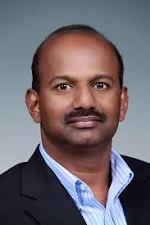How Lasers Can Help with Nuclear Nonproliferation Monitoring
This webinar is hosted By: Applied Spectroscopy Technical Group
28 May 2025 10:00 - 11:00
Eastern Daylight/Summer Time (US & Canada) (UTC -04:00)In this webinar hosted by the Applied Spectroscopy Technical Group, Sivanandan Harilal will discuss the applications of laser and plasma spectroscopy in the context of nuclear non-proliferation. Specifically, Dr. Harilal will cover utilizing optical spectroscopy of laser-produced plasmas for the standoff isotopic analysis of special nuclear materials. Additionally, Dr. Harilal will discuss how this technique serves as a surrogate for understanding the chemistry of high explosives.
Subject Matter Level: Introductory - Assumes little previous knowledge of the topic
What You Will Learn:
• How optical spectroscopy is applied in the context of nuclear nonproliferation
• About laser-induced breakdown spectroscopy with nuclear and other hazardous materials
• How nonlinear optics and plasma science are combined for remote sensing
Who Should Attend:
• Students, postdocs, early career researchers interested in applications of optical spectroscopy
• More senior members who may be looking to expand collaborations or learn new about new or different applications for visible spectroscopies
About the Presenter: Sivanandan Harilal from Pacific Northwest National Laboratory
 Harilal currently serves as the Chief Scientist in the National Security Directorate at the Department of Energy’s Pacific Northwest National Laboratory in Washington state. With over 25 years of experience, his expertise spans laser-plasma interaction, plasma-material interaction, plasma and fireball spectroscopy, and plasma sources for lithography and microscopy. Dr. Harilal has authored more than 200 peer-reviewed publications and five book chapters. He is also a fellow of Optica, SPIE, and IEEE, and holds positions as an associate editor for Optics Express and Spectrochimica Acta B.
Harilal currently serves as the Chief Scientist in the National Security Directorate at the Department of Energy’s Pacific Northwest National Laboratory in Washington state. With over 25 years of experience, his expertise spans laser-plasma interaction, plasma-material interaction, plasma and fireball spectroscopy, and plasma sources for lithography and microscopy. Dr. Harilal has authored more than 200 peer-reviewed publications and five book chapters. He is also a fellow of Optica, SPIE, and IEEE, and holds positions as an associate editor for Optics Express and Spectrochimica Acta B.
